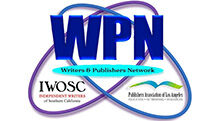 by Bobbie Christmas
by Bobbie Christmas
Q: When a character is addressed by a title, would it require capitalization?
For example, which is correct:
A. “Keep looking,” said Captain Carlyle.
B. “There is no one here, Captain,” said Smith.
A. “Keep looking,” said Captain Carlyle.
C. “There is no one here, captain,” said Smith.
A: A and B are correct. If a title precedes a name or replaces a name, the title gets capitalized. Examples: I met Sergeant Herb Harrison when he was fresh out of college. I met Herb Harrison, who is now a sergeant, when he was fresh out of college. The jury rose for Judge Bryan Golson. The jury rose for the judge. I loved Mom’s cooking. I loved my mom’s cooking. We took Highway 85 to get home. We took the highway home. You are dismissed, Lieutenant.
Q: After initially using italics for periodicals and vessels such as these:
The London Times (italicized)
Chicago Tribune (italicized)
USS Bremen (Bremen italicized)
Can I go to roman type for The Times, the Tribune, and Bremen?
A: Because I could not find anything in The Chicago Manual of Style that indicates it is acceptable not to italicize a periodical or vessel title if shortened, I must assume that such things should always be italicized. The only time a title of this type would not be italicized would be when it appears in running text that is italicized. In that case, the title would be set in roman type to set it apart from the italicized type surrounding it.
Q. While flipping through an old issue of Writer’s Digest, I came across the following puzzling comment by a reader: “I’ve learned to show, not tell, by circling to be verbs and changing them before submitting a draft. However, you publish famous writers who use to be verbs when stronger verbs might be used. Would, could and should also appear more often than my instructors have taught me.”
What are to be verbs?
What is weak about would, could and should?
A: To be verbs include any form of the verb to be. Such linking verbs are passive; they show no action. They tell, rather than show. Linking verbs simply say one thing is something else, for example, “The rain was cold.” Some to be verbs include be, being, been, is, am, are, was, and were. While writers cannot entirely avoid the common verb to be, whenever a writer replaces a passive to be verb with an active verb, the sentence becomes stronger and often more visual. To avoid using a linking verb, “The rain was cold” might be recast this way: “Cold rain poured from the sky.” See how the use of the verb was did not give a visual picture, but the stronger verb, poured, does?
Would, could, and should are auxiliary verbs (verbs that must be linked to other verbs), so they, too, offer opportunities for tighter, more visual writing. Instead of this: “Every morning Mary would make pancakes for her family,” consider this recast: “Every morning Mary cooked pancakes for her family.”
For much more information on hundreds of subjects of vital importance to writers, order Purge Your Prose of Problems, a Book Doctor’s Desk Reference Book.
Send your questions to Bobbie@zebraeditor.com. Bobbie Christmas, book editor, owner of Zebra Communications, and quadruple-award-winning author of Write In Style: How to Use Your Computer to Improve Your Writing, will answer your questions quickly. Read more Ask the Book Doctor questions and answers at www.zebraeditor.com.
